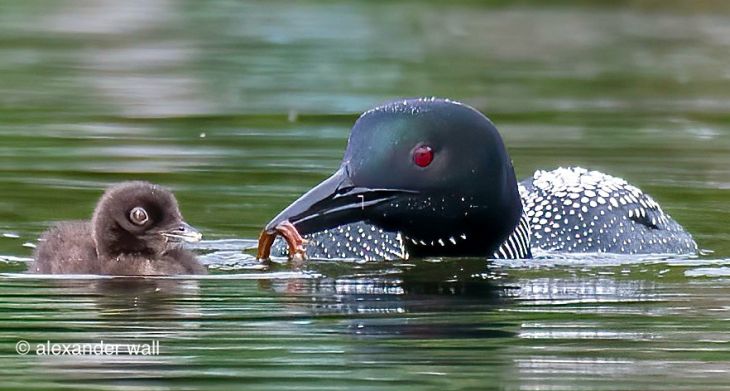
Loon Ruminations

I know that a core tenant of working with any animal is to avoid anthropomorphizing it, or giving it human traits, but when I see a loon giving me a serious side-eye before diving underwater, or hooting softly to its mate as they travel the coastline, or sending off a warning call as a plane flies overhead, I can’t help but assign them human experiences and emotions.
Before I started my work with the Belgrade Lakes Association, I didn’t know much at all about these incredible birds. I am a rising junior at Colby College, majoring in environmental science (biodiversity and conservation!) and minoring in creative writing (can you tell?), and I grew up in the suburbs outside New York City, where the call of a loon was nothing more than stock audio in a horror movie. I always found that a little unfair.
Hearing the call of a loon in person for the first time was an outstandingly beautiful moment. I’ve fallen in love with these birds. They are truly unlike any other animal we have in the country (and I’ve seen quite a few). I am so unbelievably lucky to go out every morning to survey Great and Long Ponds, seeing these incredible animals up close as they fight, nest, forage and raise their young. I specifically recall a pair out by the west boat ramp in Long Pond that got so close to our boat that we could’ve reached out and touched their smooth, glossy feathers as they dove under our boat. At the risk of losing any scientific credibility you assume from me, it was as if they were playing with us. I’ll never forget it.

At the time of writing this, we have six chicks between the two lakes, and we expect quite a few more before the end of the month. Loons, despite their melancholy calls and beautiful appearance, are not that wise. They would build a nest on the side of the interstate if their skinny little legs could carry them that far. They nest in unshaded, uncovered patches of matted down reeds, ignoring large, uninhabited coasts and islands.
They set up shop in places where one stray boat wake will take out their nest. And yet they have the gall to look at us like we’ve done something wrong when we creep by them, their heads pressed down to attempt to stay out of sight. When their one or two eggs hatch, they’re these little brown pom-poms that ride around on their parents’ backs or under their wings. Since the chicks can’t dive on their own, they’re susceptible to boats, snapping turtles, eagles, and even other loons. I’ve resisted the urge to yell at quite a few irresponsible boaters who tear through streams with chicks in them. But I could not love this work anymore. So, if you have the time, get out and listen to the loons. They have so much to say to you.
Guest columnist Kate Jaffe is a summer intern with the Belgrade Lakes Association’s Loon Preservation Project. If you have questions regarding our Belgrade loon population, please email your inquiry to info@blamaine.org.
Download Full Newspaper: High Res | Low Res (Details…)
<— Previous Article • Summaries • Next Article —>
©2023 by Summertime in the Belgrades. All rights reserved.